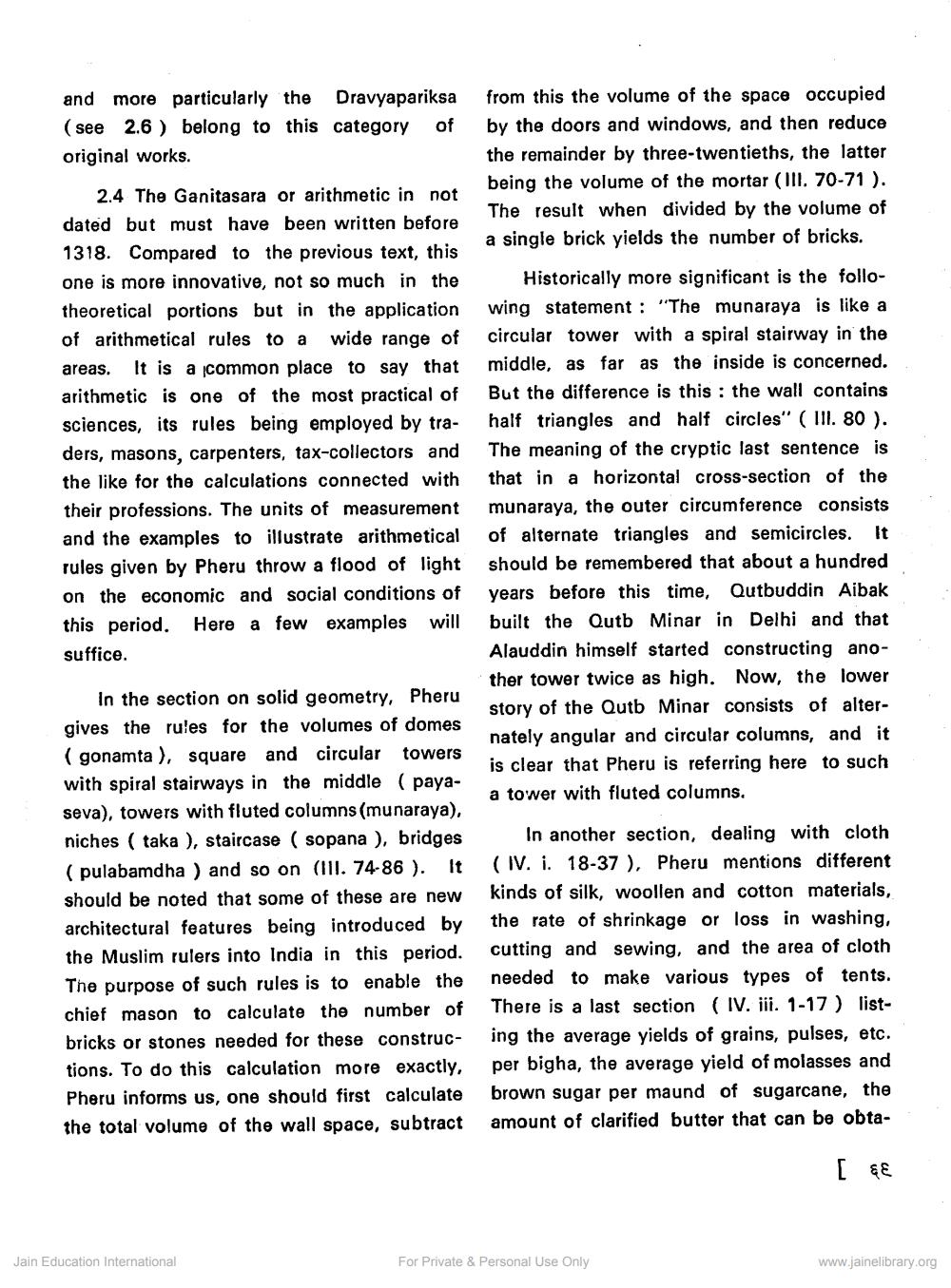Book Title: Thakkura Pheru and Popularisation of Science in India in 14th Century Author(s): Sreeramula Sarma Publisher: Z_Bhanvarlal_Nahta_Abhinandan_Granth_012041.pdf View full book textPage 7
________________ and more particularly the Dravyapariksa ( see 2.6) belong to this category of original works. from this the volume of the space occupied by the doors and windows, and then reduce the remainder by three-twentieths, the latter being the volume of the mortar (III. 70-71 ). The result when divided by the volume of a single brick yields the number of bricks. AS 2.4 The Ganitasara or arithmetic in not dated but must have been written before 1318. Compared to the previous text, this one is more innovative, not so much in the theoretical portions but in the application of arithmetical rules to a wide range of areas. It is a common place to say that arithmetic is one of the most practical of sciences, its rules being employed by tra- ders, masons, carpenters, tax-collectors and the like for the calculations connected with their professions. The units of measurement and the examples to illustrate arithmetical rules given by Pheru throw a flood of light on the economic and social conditions of this period. Here a few examples will suffice. Historically more significant is the following statement : "The munaraya is like a circular tower with a spiral stairway in the middle, as far as the inside is concerned. But the difference is this : the wall contains half triangles and half circles" ( III. 80 ). The meaning of the cryptic last sentence is that in a horizontal cross-section of the munaraya, the outer circumference consists of alternate triangles and semicircles. It should be remembered that about a hundred years before this time, Qutbuddin Aibak built the Qutb Minar in Delhi and that Alauddin himself started constructing another tower twice as high. Now, the lower story of the Qutb Minar consists of alternately angular and circular columns, and it is clear that Pheru is referring here to such a tower with fluted columns. In the section on solid geometry, Pheru gives the rules for the volumes of domes (gonamta), square and circular towers with spiral stairways in the middle (payaseva), towers with fluted columns (munaraya), niches ( taka ), staircase (sopana ), bridges (pulabamdha ) and so on (Ill. 74-86 ). It should be noted that some of these are new architectural features being introduced by the Muslim rulers into India in this period. The purpose of such rules is to enable the chief mason to calculate the number of bricks or stones needed for these construc- tions. To do this calculation more exactly, Pheru informs us, one should first calculate the total volume of the wall space, subtract in another section, dealing with cloth (IV. i. 18-37 ), Pheru mentions different kinds of silk, woollen and cotton materials, the rate of shrinkage or loss in washing, cutting and sewing, and the area of cloth needed to make various types of tents. There is a last section (IV. iii. 1-17 ) listing the average yields of grains, pulses, etc. per bigha, the average yield of molasses and brown sugar per maund of sugarcane, the amount of clarified butter that can be obta [ & Jain Education International For Private & Personal Use Only www.jainelibrary.orgPage Navigation
1 ... 5 6 7 8 9 10
